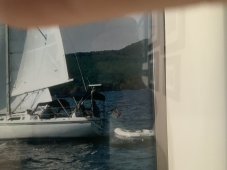Andrew Price
New Member
- Joined
- Jan 22, 2022
- Messages
- 3
Im wanting to create a solar system on my Sail boat. 2 rigid panels of 100 Watts each plus a Flexi panel of 150 watts.
I have three 12 volt batteries on the boat, two 85amph and one 100amph, these are connected in parallel.
Which way would it be best to connect the solar to the batterys.
1. should I connect the three panels together then into one MTTP and then out to one 12 volt battery or
2. should I be connecting three panels directly to three batterys independently through three MTTP?
When the engine is running it charges the batterys through an alternator, I also have shore power when connected on the dock but the solar is wanted for when sailing and an anchor.
Any advice would be much appreciated.
I have three 12 volt batteries on the boat, two 85amph and one 100amph, these are connected in parallel.
Which way would it be best to connect the solar to the batterys.
1. should I connect the three panels together then into one MTTP and then out to one 12 volt battery or
2. should I be connecting three panels directly to three batterys independently through three MTTP?
When the engine is running it charges the batterys through an alternator, I also have shore power when connected on the dock but the solar is wanted for when sailing and an anchor.
Any advice would be much appreciated.
Last edited:




